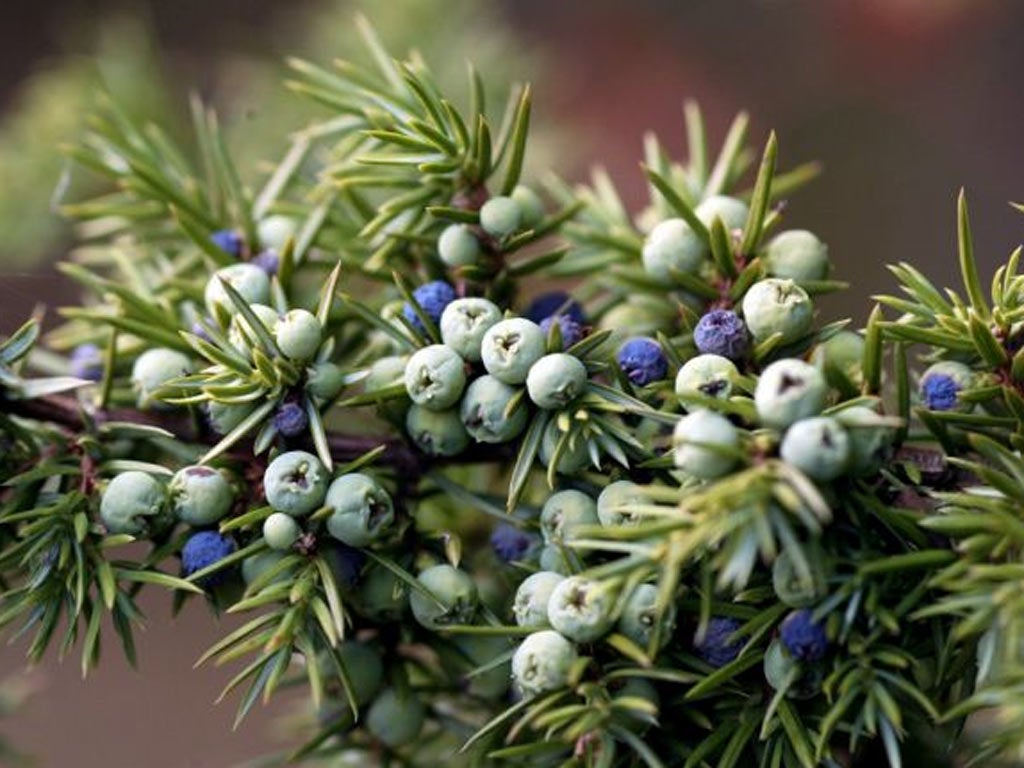A real tonic for gin blossoms as juniper berry avoids extinction

Juniper berries are the essential flavouring ingredient in gin, but the bushes that bear the aromatic fruit have been disappearing across Britain – and in southern England have been in danger of extinction.
Now, however, the wildflower conservation charity Plantlife has just completed the first phase of a major project to revive the fortunes of Juniperus communis, with 300 seedlings growing at nine sites where existing juniper bushes were old and incapable of reproducing, a conservation success that has never been achieved on this scale.
Juniper is a fascinating plant in that it is one of only three native British conifers – the others are the yew and the Scots pine – and it was one of the first trees to colonise Britain after the last Ice Age.
Juniper numbers have fluctuated but on the whole declined over a long period, with many southern English counties having lost 60-70 per cent of their populations. Without action, the shrub was facing extinction here in the next 50 years, so, in early 2010, Plantlife launched a conservation project and survey to help save the species. It has involved trialling new techniques to build up the most important populations across the chalk and limestone country of lowland southern England.
"More than 30 project sites were chosen for a range of conservation measures, including large-scale habitat management, experimental seedling shelters and the propagation of cuttings for later replanting," said Tim Wilkins, Plantlife's Species Recovery Coordinator.
"Our Great Juniper Hunt survey in 2010-11 showed that many populations of juniper were shrinking as bushes died of old age, with nearly a quarter of sites supporting one bush and 85 per cent of sites containing no seedlings up to five years old.
"To get the next generation of juniper, you need good numbers of both male and female bushes at each site, plenty of viable seed and the right conditions for germination and growth of seedlings, free of hungry rabbits and grazing stock."
The word "gin" derives from either "genièvre" or "jenever", the French and Dutch words for juniper. The berries are also used in cooking, particularly to flavour game dishes.
In the 19th century, when a law was introduced outlawing unlicensed whisky stills, juniper was harvested for fuel for this illicit trade as it burns with an almost invisible smoke. Juniper has also long been used for its medicinal qualities. During the 1918 Spanish Flu epidemic, hospitals experimented with spraying vapourised oils into the atmosphere of flu wards in an attempt to prevent air-borne infection spreading and juniper was one of those found to be particularly effective.
"There is no single cause for juniper decline but loss of seedling habitat, through under-grazing and the development of dense grassland and scrub, seems to be the most widespread," said Tim Wilkins.
"Some colonies were also affected by a shortage of viable seed, or were overrun with rabbits eating any emerging seedlings. The loss of juniper would have represented more than the loss of a single species: it supports more than 40 species of insect and fungus that cannot survive without it. The conditions necessary for juniper seeds to germinate are also beneficial to a host of other plants, many of which are also under threat."
Join our commenting forum
Join thought-provoking conversations, follow other Independent readers and see their replies
Comments